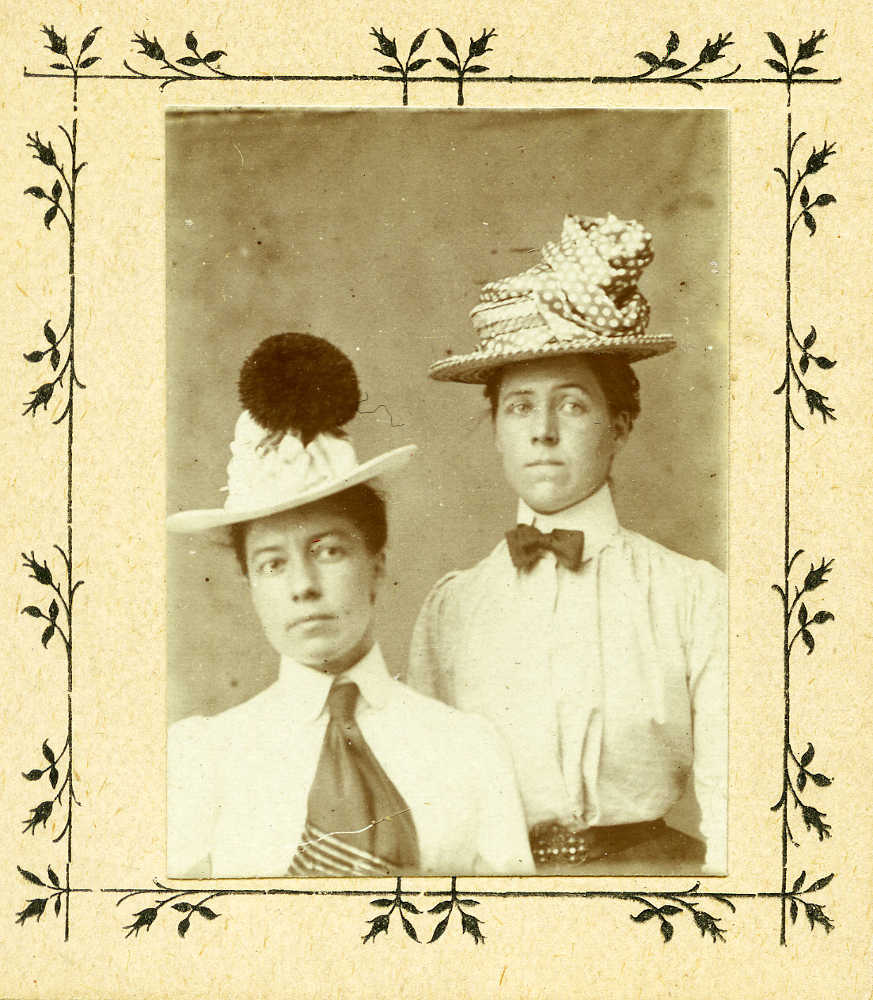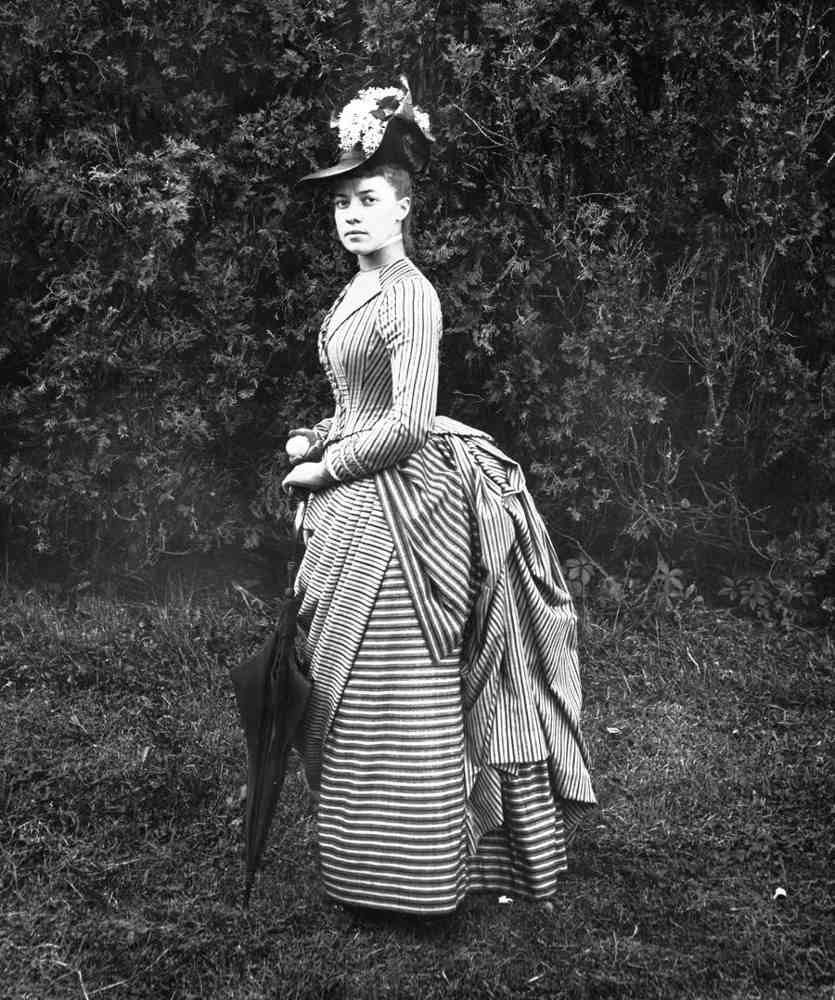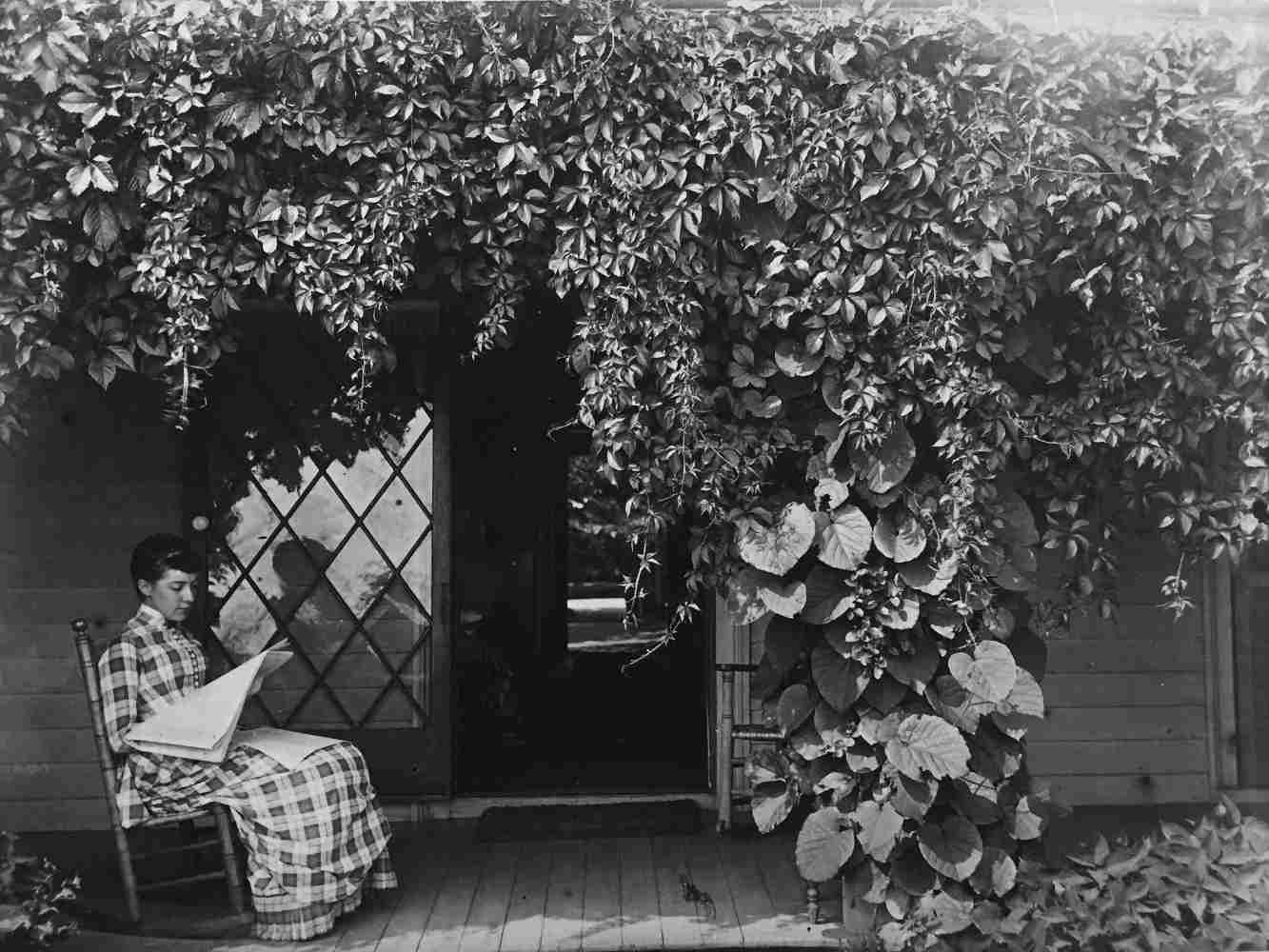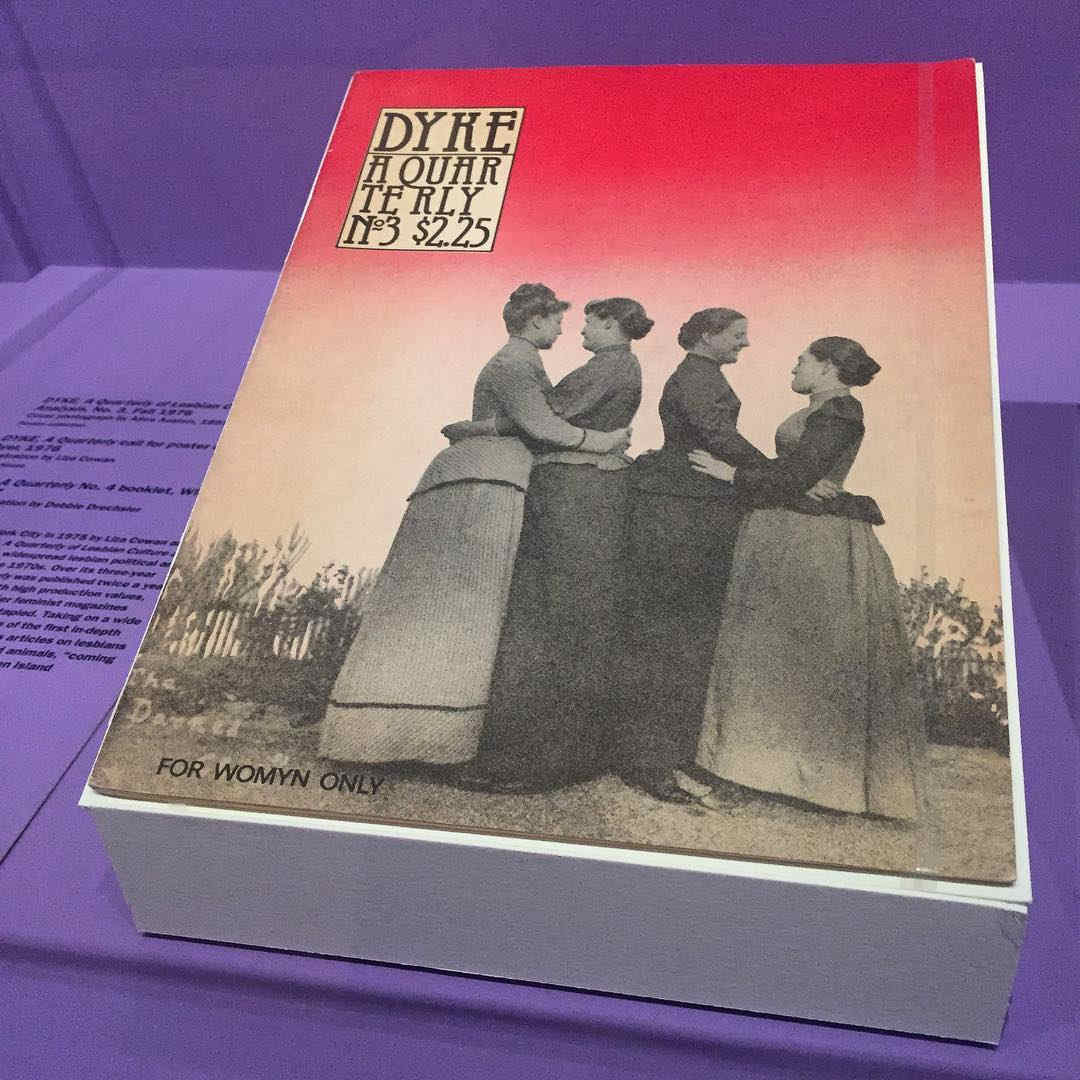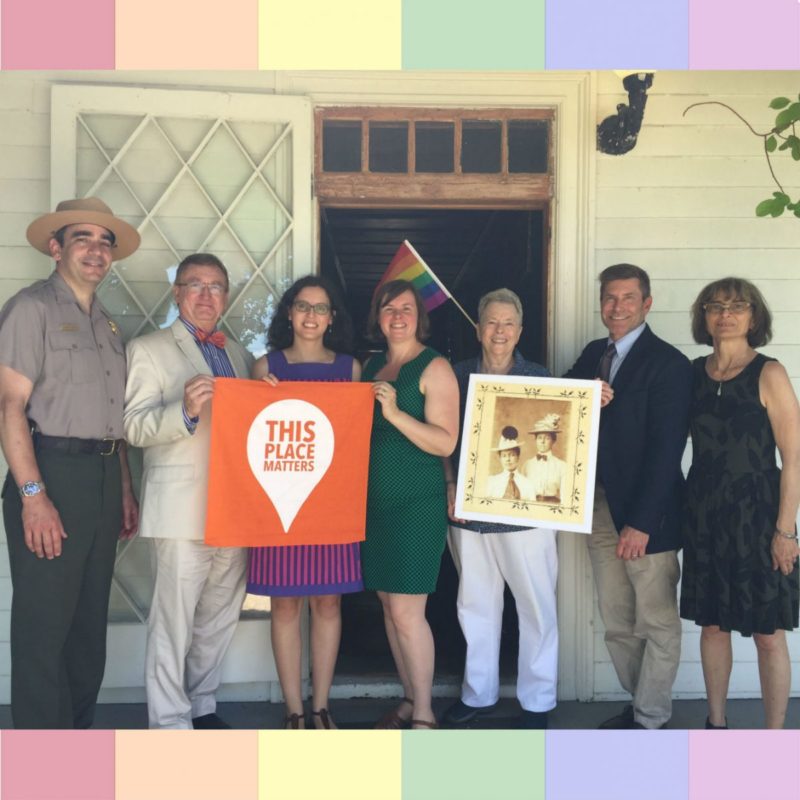
Alice Austen & Gertrude Tate Residence
also known as Clear Comfort and as the Alice Austen House (name of house museum)
overview
Pioneering female photographer Alice Austen grew up in her family’s home where she later lived with schoolteacher Gertrude Tate, her partner of 55 years.
Austen’s work includes early images of women embracing and dressed in male drag, which have since become iconic to the LGBT community.
Through the efforts of the NYC LGBT Historic Sites Project, this site’s 1970 nomination to the National Register of Historic Places was amended in 2017 to include its significance to LGBT history.
History
This picturesque house, sited on the shore of The Narrows, dates back to c. 1700, with a series of later additions, including ornament that transformed it into a Gothic cottage in the mid-19th century after its purchase by businessman John Austen.
In 1867, his baby granddaughter Alice Austen (1866-1952) moved into the house, and she remained here until 1945. Alice Austen is one of the first notable women photographers in America. She was introduced to photography as a child and had a darkroom installed in a second-floor closet. Her images, chronicling Staten Island, New York City, and other places, and particularly focusing on the life of her friends and social circle, are considered among the finest produced in America in the late 19th and early 20th centuries.
Austen met Gertrude Tate (1872-1962), a kindergarten teacher and professional dancing instructor from Brooklyn, during an excursion to the Catskills in 1897. They then began an intimate relationship that would last until Austen’s death 55 years later. Tate moved into Clear Comfort in 1917 despite her mother and sister’s disapproval of her “wrong devotion” to Austen.
Austen often photographed her non-traditional friends, creating a unique group of provocative images of a social life that was out of the ordinary for its time. A number of her most intimate images challenge gender roles. Although it is not possible today to know the exact nature of the relationships in her photographs, several stand out for their transgressive character. “The Darned Club” shows two female couples with their arms around each other’s waists. In another photograph, Alice and two friends are dressed in men’s attire; Alice sports a cigarette in one hand, and her friend Julia Martin is seated with her umbrella protruding from between her legs in a particularly phallic manner.
We look so funny with those mustaches on, I can hardly tell which is which. … We did it just for fun. … Maybe we were better looking men than women.
Austen lost her money in the 1929 stock market crash, but was able to hold onto the house through the earnings Tate made teaching dance classes. Tate also suggested they open a tea room on the property, following success they had in the 1920s running one at the Billiou-Stillwell-Perine House in an effort to help raise funds for its restoration. The tea room at Clear Comfort operated during the summer, but closed in 1940. After being evicted in 1945, the couple moved to a small apartment at 141 St. Mark’s Place in the nearby neighborhood of St. George. Tate looked after the ailing Austen until a fall left her unable to continue teaching dance lessons. Austen was then admitted to several nursing homes, eventually signing over her remaining money and possessions to Tate’s legal ownership.
Tate moved in with family in Jackson Heights, Queens, but they would not let Austen join her. Despite the distance, Tate visited Austen every week, even after she was admitted to the hospital ward of Staten Island Farm Colony, a local poorhouse. The discovery of 3,500 of Austen’s plate glass negatives in 1950 earned her enough money to move to a private nursing home, where she died in 1952. The couple’s wish to be buried next to each other was not granted by their families; Austen was laid to rest in her family’s plot at Moravian Cemetery on Staten Island and Tate was buried in Cypress Hills Cemetery in Brooklyn.
In the 1950s and 1960s, a group of historic preservationists that included photographer Berenice Abbott and architect Philip Johnson fought to save the house from demolition. The property later became a house museum known as the Alice Austen House. In a 1994 demonstration, the Lesbian Avengers, an activist organization, marched around the grounds calling it a “National Historic Lesbian Landmark” and passed out pamphlets advocating that Austen and Tate’s same-sex relationship be acknowledged. This has come to fruition in recent years as the house museum staff and board has worked to incorporate the couple’s story by bringing in LGBT scholars and, beginning in 2016, participating in the LGBT Pride March.
Landmark Designations for LGBT Significance
In June 2017, through the NYC LGBT Historic Sites Project’s extensive research and writing, the 1970 nomination of the Alice Austen House to the National Register of Historic Places was amended to include its significance to LGBT history. This followed the Project’s amendment to the site’s New York State Register of Historic Places listing. The National Register report amendment is available in the “Read More” section below.
Entry by Andrew S. Dolkart, project director (March 2017; last revised March 2024).
NOTE: Names above in bold indicate LGBT people.
Building Information
- Architect or Builder: Unknown
- Year Built: c. 1700; 1846 (remodel and addition)
Sources
Alice Austen file, Lesbian Herstory Archives.
Ann Novotny, Alice’s World: The Life and Photography of an American Original, Alice Austen, 1866-1952 (Old Greenwich: The Chatham Press, 1976).
C. Jane Gover, The Positive Image: Women Photographers in Turn of the Century America (Albany: State University of New York Press, 1988).
“Her Life,” Alice Austen House website, bit.ly/2nmLUsu.
Lillian Faderman and Phyllis Irwin, “Alice Austen and Gertrude Tate: A Boston Marriage on Staten Island,” Historic House Trust New York City, 5 no. 4 (Fall 2010), p. 7.
Do you have more information about this site?
This project is enriched by your participation! Do you have your own images of this site? Or a story to share? Would you like to suggest a different historic site?
